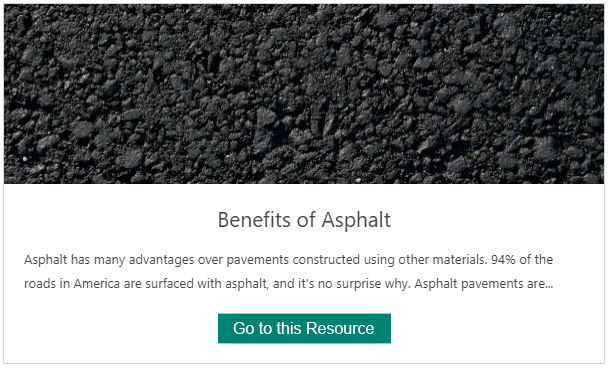The Basic Principles Of A1 Professional Asphalt & Sealing Llc
The Basic Principles Of A1 Professional Asphalt & Sealing Llc
Blog Article
The Best Guide To A1 Professional Asphalt & Sealing Llc
Table of ContentsMore About A1 Professional Asphalt & Sealing LlcThe Basic Principles Of A1 Professional Asphalt & Sealing Llc Everything about A1 Professional Asphalt & Sealing LlcA1 Professional Asphalt & Sealing Llc Fundamentals ExplainedUnknown Facts About A1 Professional Asphalt & Sealing Llc

The oil in a vehicle engine is not simply oil. It consists of a variety of ingredients to boost the car's performance. These include polymers, thickness modifiers, warmth stabilizers, additional lubes, and use ingredients. The REOB has all the additives that were in the waste oil in addition to the wear steels from the engine (primarily iron and copper).
By making many blends utilizing different REOB samples and different asphalt binders, the variants mostly can be balanced out. Several States supplied samples of known REOB structure to TFHRC researchers, that evaluated the samples to contrast the portion of included (understood) REOB to the located (checked) amount. The analyses showed an equivalent portion of added and discovered REOB.
The Ultimate Guide To A1 Professional Asphalt & Sealing Llc
None of those States realized that the asphalt they were purchasing consisted of REOB. One State urged its samples had no REOB - https://linktr.ee/a1asphaltseal.
Of the 1,532 examples examined, 12 percent included REOB, and some had appreciably high levels of it at 1020 percent. The highest degree was 34 percent in an example from Texas, which TxDOT had made use of in a patching compound. This testing additionally revealed the visibility of phosphoric acid in 11 percent of the examples, and 2 percent consisted of ground tire rubber.
2 years ago at TRB's annual conference, the Federal researchers held an REOB workshop and presented the findings of their lab assessments to a standing room-only crowd. Some companies do not especially prohibit REOB, they do impose physical tests that prevent its useeffectively a restriction. Others do not prohibit it by spec, yet have arrangements with asphalt vendors to stay clear of making use of REOB
All about A1 Professional Asphalt & Sealing Llc
A handful do allow REOB, some within particular limitations. For instance, Ohio and Texas limit degrees to much less than 5 percent of the asphalt. To establish a reputable examination technique that all States can use, the TFHRC researchers established a round-robin examination strategy. The individuals are 11 State freeway firms (Illinois, Massachusetts, Minnesota, Mississippi, Montana, North Carolina, Oklahoma, South Carolina, Texas, Vermont, and Wyoming), 2 independent screening laboratories, the Ministry of Transportation in Ontario, Queen's College in Ontario, and an Ontario paving service provider.
In overall, the scientists prepared and delivered 720 blends. The participants are checking the examples individually utilizing the standards offered by the TFHRC scientists. The round-robin screening is almost completed, and TFHRC remains in the procedure of gathering the results. The outcome will be a proposed AASHTO test approach that any State can take on and utilize (diagonal parking vs straight parking).
The pavement with REOB, which is situated 0.6 mile (1 kilometer) from the pavement without REOB, has similar subgrade, website traffic density, and climate. Nevertheless, the sector of Highway655 with 5 to 10 percent REOB showed significant breaking. In this instance, the existence of REOB was the recognized root cause of breaking at a reduced temperature levels.
A section of test pavement in Minnesota (MN1-4) discovered to consist of REOB likewise broke prematurely. The pavement carried out well for the first 3 to 4 years, but then began to break.
About A1 Professional Asphalt & Sealing Llc
The examinations were not considerable, yet they revealed that at levels of 6 percent or more, the tensile toughness of the asphalt dropped substantially. At a degree of 3.5 percent REOB, the variant in the physical examination techniques was higher than the effect of REOB. As a matter of fact, it was challenging for researchers to evaluate whether REOB was existing.

One binder criterion thought about is the difference in between the low temperature level essential specification temperature for rigidity (S) in the bending beam rheometer and the flexing beam of light rheometer creep slope (m-value) noted as Tcritical. TC = TC (S) TC (m-value). Examination of this specification is still recurring. Two independent study groups, one from AASHTO and the other from the Asphalt Institute, wrapped up that more research is needed on using REOB in asphalt.
Previously, all asphalt testing determined engineering properties such as stiffness. These examinations do disappoint what materials had been included in the asphalt. One sample gotten throughout the TFHRC research had an extremely strange evaluation. The example had the complying with test results: Superpave PG 64-28 with a high temperature level quality of try here 67.3 Tcritical on the flexing light beam rheometer was 6.7 degrees Celsius.

A1 Professional Asphalt & Sealing Llc for Dummies
These outcomes demonstrate there are weaknesses in the standardized design testing protocols that may be manipulated. The producer might have an economic advantage and the product passes all the standard tests, however the product might not be advantageous to making certain long-lasting performance. To resolve this issue and the expansion of brand-new asphalt additives and extenders, TFHRC is beginning a study program to use handheld spectroscopic gadgets, x-ray fluorescence spectroscopy, and Fourier transform infrared spectroscopy to allow analyses to be done in the field rather than having to take samples back to the lab.
Report this page